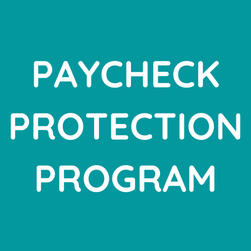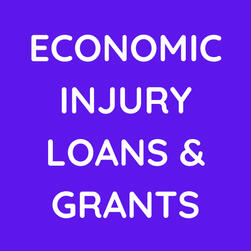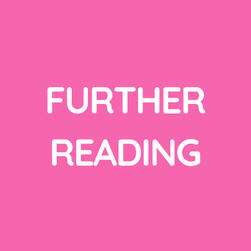COVID-19 Tenant Resources
To our valued tenants:
As we navigate this challenging time together, we hope to provide you with as much information, resources, and support needed to help us all sustain our collective economic vitality. There is a lot of information out there, and we hope to break it down a bit so that it’s more actionable for your business.
See below for the most up to date information as of April 24, 2020.
As we said above... we’re in this together.
-The Team at Boylston Properties
Coronavirus Aid, Relief, and Economic Security (CARES) Act
CARES Act is a bill that was passed on March 26, 2020, that includes aid packages, payroll provisions, and tax implications for small businesses. The government has allocated $350 billion to help small businesses keep workers employed amid the pandemic and economic downturn.
Click each box below to find summaries & additional resources for these legislative inclusions.
Paycheck Protection Program (PPP)
This initiative provides 100% federally guaranteed loans to small businesses. PPP loans will be made by participating commercial lenders between February 15, 2020, and June 30, 2020 (the covered period), to eligible borrowers (see below). These PPP loans are fully guaranteed by the SBA. As of April 24, 2020, the government approved spending $310 billion to replenish the depleted Paycheck Protection Program.
Are You Eligible?
In addition to small businesses, any business, nonprofit, veterans’ organization or Tribal organization is eligible if it employs less than 500 employees, OR, if applicable, the number of employees the SBA has established as the size standard for the business’s primary North American Industry Classification System (NAICS) code.
To be eligible, an applicant must have been in operation on February 15, 2020, and certify that:
The uncertainty of current economic conditions makes the loan request necessary to support ongoing operationsFunds will be used to retain workers and maintain payroll or to make mortgage payments, lease payments, or utility paymentsThe applicant does not have an application pending for an SBA business loan for the same purpose and duplicative of amounts applied for or received under a covered loanDuring the period beginning on February 15, 2020, and ending on December 31, 2020, the applicant has not received another SBA business loan for the same purpose and duplicative of PPP amounts applied for/received
REMEMBER: The 500-employee threshold includes all employees: full-time, part-time, and any other status.
For companies with more than one location, for which the primary NAICS code begins with a 72 (accommodation, food services and drinking places), the company will be eligible if no one location has more than 500 employees.
If the company’s primary NAICS code begins with a 72 and the company has no more than 500 employees, the business has been assigned a franchise code by the SBA, or the company receives financial assistance from an SBIC licensed company, the company need not aggregate “affiliates” employees with its own.
How Much Can You Borrow?
Loans can be up to 2.5 x your average monthly payroll costs, up until June 30, not to exceed $10 million.
Here’s a quick primer from The U.S. Chamber of Commerce about how to calculate your payroll costs:
INCLUDED (for employers) = the sum of payments of any compensation with respect to employees that is a:
salary, wage, commission, or similar compensation;payment of cash tip or equivalent;payment for vacation, parental, family, medical, or sick leaveallowance for dismissal or separationpayment required for the provisions of group health care benefits, including insurance premiumspayment of any retirement benefitpayment of state or local tax assessed on the compensation of the employee
EXCLUDED (for employers) =
Compensation of an individual employee in excess of an annual salary of $100,000, as prorated for the period February 15, to June 30, 2020Payroll taxes, railroad retirement taxes, and income taxesAny compensation of an employee whose principal place of residence is outside of the United StatesQualified sick leave wages for which a credit is allowed under section 7001 of the Families First Coronavirus Response Act (Public Law 116– 5 127); or qualified family leave wages for which a credit is allowed under section 7003 of the Families First Coronavirus Response Act
SUBTRACT EXCLUDED EXPENSES FROM INCLUDED EXPENSES TO GET YOUR TOTAL PAYROLL COSTS
Are You Eligible For Loan Forgiveness?
The loan carries a maximum term of 10 years, with a maximum interest rate of 4%. There are no loan fees or prepayment fees, and the first loan repayment will be deferred for six months. Recipients can apply for and receive forgiveness of all or a portion of a PPP loan. Forgiveness will generally be equivalent to the amounts the applicant can document that it paid in the eight weeks following origination of the loan -- for payroll, mortgage interest, rent and utilities. Anything outside of those eight weeks will be treated as a loan.
The amount of loan forgiveness is reduced if there is a reduction in the number of employees or a reduction of greater than 25% in wages paid to employees. In other words, you must use 75% of the PPP loan for payroll.
For any employee who did not earn during any pay period in 2019 wages at an annualized rate more than $100,000, the amount of any reduction in wages that is greater than 25% compared to their most recent full quarter.
Reductions in employment or wages that occur during the period beginning on February 15, 2020, and ending 30 days after enactment of the CARES Act, (as compared to February 15, 2020) shall not reduce the amount of loan forgiveness IF by June 30, 2020 the borrower eliminates the reduction in employees or reduction in wages.
Other considerations for borrowers/employers:
Lenders will not look to see if the borrower sought and was unable to obtain credit elsewhere.A personal guarantee is not required for the loan.No collateral is required for the loan.
How Do You Apply?
Applications for PPP loans will open on Friday, April 3, and small businesses will be able to apply through an established SBA 7(a) lender by submitting this application form and other required documentation. The Treasury Department is working on approving other financial institutions to participate in the program.
Here is more information from the Treasury: PPP Information Sheet for Borrowers
Small Business Debt Relief
This program will provide immediate relief to small businesses with non-disaster SBA loans, in particular, 7(a), 504, and microloans. Under it, SBA will cover all loan payments on these SBA loans, including principal, interest, and fees, for six months. This relief will also be available to new borrowers who take out loans within six months of the President signing the bill into law.
Read more and view FAQs (on page 6).
Economic Injury Disaster Loans & Emergency Economic Injury Grants
These grants provide an emergency advance of up to $10,000 to small businesses and private non-profits harmed by COVID-19 within three days of applying for an SBA Economic Injury Disaster Loan (EIDL). To access the advance, you first apply for an EIDL and then request the advance. The advance does not need to be repaid under any circumstance, and may be used to keep employees on payroll, to pay for sick leave, meet increased production costs due to supply chain disruptions, or pay business obligations, including debts, rent and mortgage payments.
Read more and view FAQs (on page 7).
Submit through the SBA with this application for Disaster Loan Assistance.
Small Business Tax Implications
There are two tax provisions that small businesses should be aware of -- and take advantage of if they not eligible for the Paycheck Protection Program.
Employee Retention Credit for Employers Subject to Closure or Experiencing Economic Hardship -- This provision would provide a refundable payroll tax credit for 50% of wages paid by eligible employers to certain employees during the COVID-19 crisis. The credit is available to employers, including non-profits, whose operations have been fully or partially suspended as a result of a government order limiting commerce, travel or group meetings. The credit is also provided to employers who have experienced a greater than 50 percent reduction in quarterly receipts, measured on a year-over-year basis. The credit is provided through December 31, 2020. The credit is not available to employers receiving assistance through the Paycheck Protection Program.
Delay of Payment of Employer Payroll Taxes -- The Senate’s $2 trillion stimulus package will also postpone payroll taxes for employers. It will allow companies to pay their 2020 payroll taxes through the end of 2022. They will have to pay 50% by the end of 2021. Deferral is not provided to employers receiving assistance through the Paycheck Protection Program.
Read more and view FAQs (on page 11).
Economic Stimulus Plan and How It Impacts Your Employees
Individuals (your employees) are eligible to receive one-time stimulus payments from the government.
Using 2019 tax returns, or if they haven’t prepared a tax return yet, your employees can use their 2018 return, and single adults with Social Security numbers who have an adjusted gross income of $75,000 or less will get $1,200.For every qualifying child age 16 or under, the payment will be an additional $500.Married couples with no children earning $150,000 or less will receive a total of $2,400.Taxpayers filing as head of household will get the full payment if they earned $112,500 or less.Above those income figures, the payment decreases until it stops altogether for single people earning $99,000 or married people who have no children and earn $198,000.A family with two children will no longer be eligible for any payments if its income surpassed $218,000.The payment is technically an advance on a tax credit that is available for the entire year, so if employees become eligible this year due to future losses, they may benefit when they file 2020 taxes.If the IRS has your bank information for prior tax filings, the government expects to direct deposit or send checks within three weeks.
Read more in the New York Times’ F.A.Q. on Stimulus Checks, Unemployment and the Coronavirus Plan
Small Business Counseling and Mentoring
Turn to turn to your local Small Business Development Center (SBDC), Women’s Business Center (WBC), or SCORE mentorship chapter for free counseling and low-cost training.
Find your local SBDCFind your local WBCFind a SCORE mentor (remote mentoring is available)
Communicating with your customers
Keep People Informed
It is very important to stay connected with your audience during these unprecedented times. Utilize your social media accounts to keep customers and your community informed with changes to operations and any other important messages.Consider adding a sign-up form or ways for people to opt-in for future communications so that they can stay up-to-date with your business. Staying ahead of any questions or concerns your customers have will be key.Communication plays a significant role during times of uncertainty. The more you build trust and consistent messaging today, the stronger your community will be as a result.
Use Creativity to Remain Relevant
It is important to continue to brainstorm and create ways to remain relevant during this time. Ideas include:
Provide digital resources or services that could help with people’s new way of lifeBring a personalized experience or offer onlineAlign with a local charity or organization to supportCollaboration with other businesses is also highly encouraged to drive engagement, thoughtful content and to join forces with your neighbors and partners. Also, make sure you share your creative ideas with landlords, employees, business partners and community groups not only for their use but to encourage further sharing and exposure to new customers or clients.
Visit these additional marketing resources for further ideas and assistance:
Facebook Business Resource Hub - Managing through and building resilience during the COVID-19 outbreakMailChimp Small Business Resources During COVID‑19Inside Google Marketing: 5 principles guiding our media teams in the wake of the COVID-19 outbreak
further reading
LEGISLATION
Coronavirus Emergency Loans -- Small Business Guide and Checklist presented by the U.S. Chamber of Commerce
The Small Business Owner’s Guide to the CARES Act presented by the U.S. Senate Committee on Small Business and Entrepreneurship
FOR RESTAURANTS
National Restaurant Association’s Update on CARES Act -- a summary of the bill’s key provisions dealing with restaurants, foodservice establishments and their employees. Sign up here for email updates.
FOR RETAILERS
National Retail Federation’s Coronavirus Resources for Retailers -- NRF is closely monitoring the situation around the COVID-19 pandemic, coordinating with government agencies, health experts and retailers as the situation continues to evolve. Sign up here for email updates.
Retailers Association of Massachusetts’ Frequently Asked Questions on COVID-19
ICSC’s Coronavirus Information & Resources
FOR HOTELS
American Hotel and Lodging Association (AHLA) - The Facts About Coronavirus - With the World Health Organization announcing that the Coronavirus is a public health emergency, the American Hotel & Lodging Association is sharing the most updated facts and resources with you to inform both your employees and your guests.
FOR OFFICE / LAB
Cooley - SBA Programs Under the CARES Act: Are You Eligible for Federal Assistance?
Mass Biotech Council - Coronavirus Business Resource Center
U.S. Department of Labor - Unemployment Benefits Information
Questions? Email [email protected]
The contents of this website are for informational purposes only and does not serve as a substitute for advice and counsel from accounting and legal professionals. Our team will keep this resource as up to date as possible but details are subject to change quickly as the situation evolves. We encourage you to contact your professional consultants before making any decisions that could impact your business.








